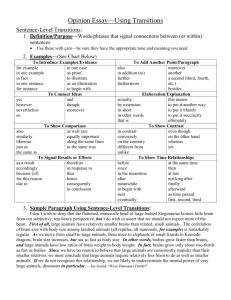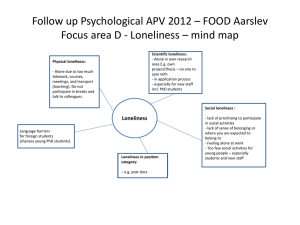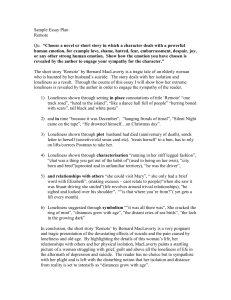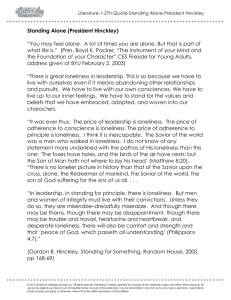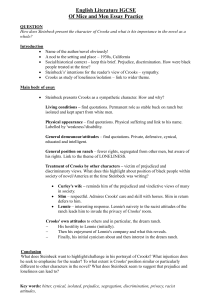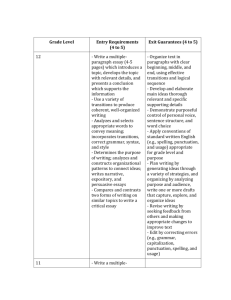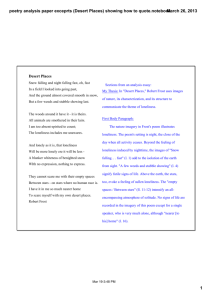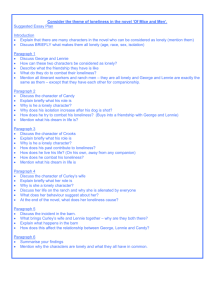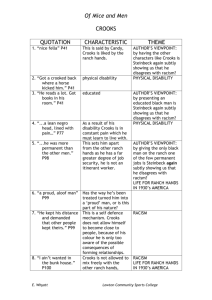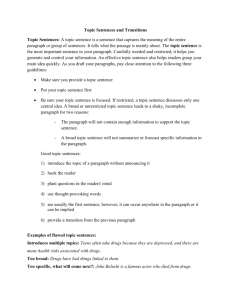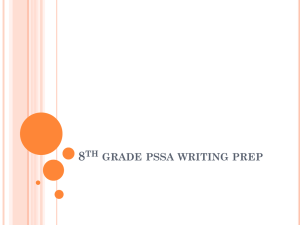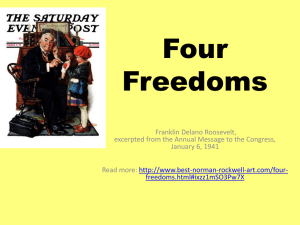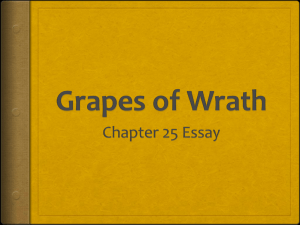Notes on Using Transitions and In
advertisement
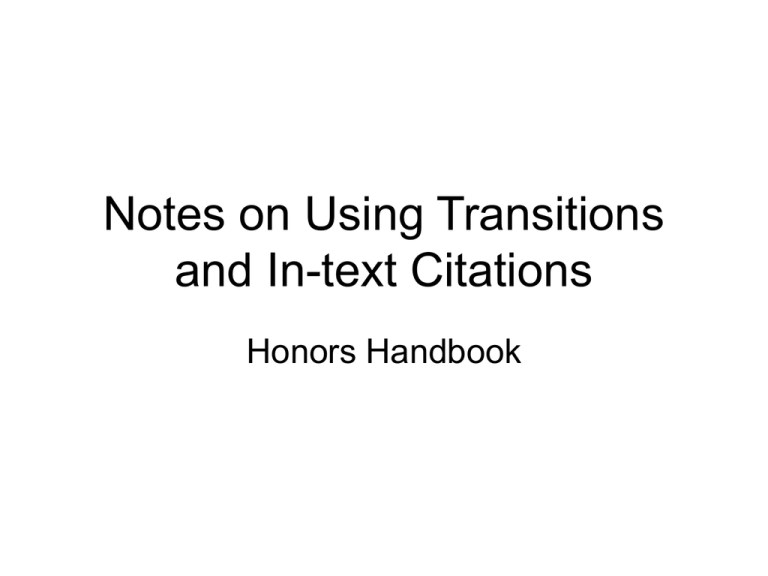
Notes on Using Transitions and In-text Citations Honors Handbook Transitions for Introducing Evidence: • • • • • • • • • For example, For instance, In addition, Furthermore, Likewise, Similarly, Equally important, First, Second, etc… Finally Transitions for Analysis/Commentary • • • • • • • • • This seemingly insignificant detail shows that… In other words… This statement demonstrates that… The irony of this detail reveals that… Steinbeck reveals George’s loneliness by… As a result, Therefore, Consequently, For this reason, Sample Showing Transitions: • For instance, Steinbeck describes on multiple occasions how George lays out a game of “solitaire” to play, even though other men abound in the bunkhouse (27). This seemingly insignificant detail demonstrates how George’s instinct oftentimes defaults to loneliness. In other words, George appears so accustomed to his life of isolation that he subconsciously retreats to solitaire—a one man game—rather than attempt to invite others to join him in a benign social activity. Transitioning from One Body Paragraph to Another: • At the end of the body paragraph, conclude with a sentence that leads into or introduces the topic of the next body paragraph. • Example: (At the conclusion of a body paragraph describing George’s loneliness, write something like this.) • George’s life of loneliness, however, pails in comparison to the isolation suffered by the African-American stable buck, Crooks. In-Text (Parenthetical) Citations • Parenthetical citation comes at the end of the quotation AFTER the quotation mark but BEFORE the period. • For example, George says,“Guys like us, that work on ranches, are the loneliest guys in the world. They got no family. They don’t belong no place” (13). • If embedding only a phrase, the citation comes at the end of the sentence. • Crooks sits on his bunk and struggles to rub “a few drops of the liniment” oil into his aching spine (67).
